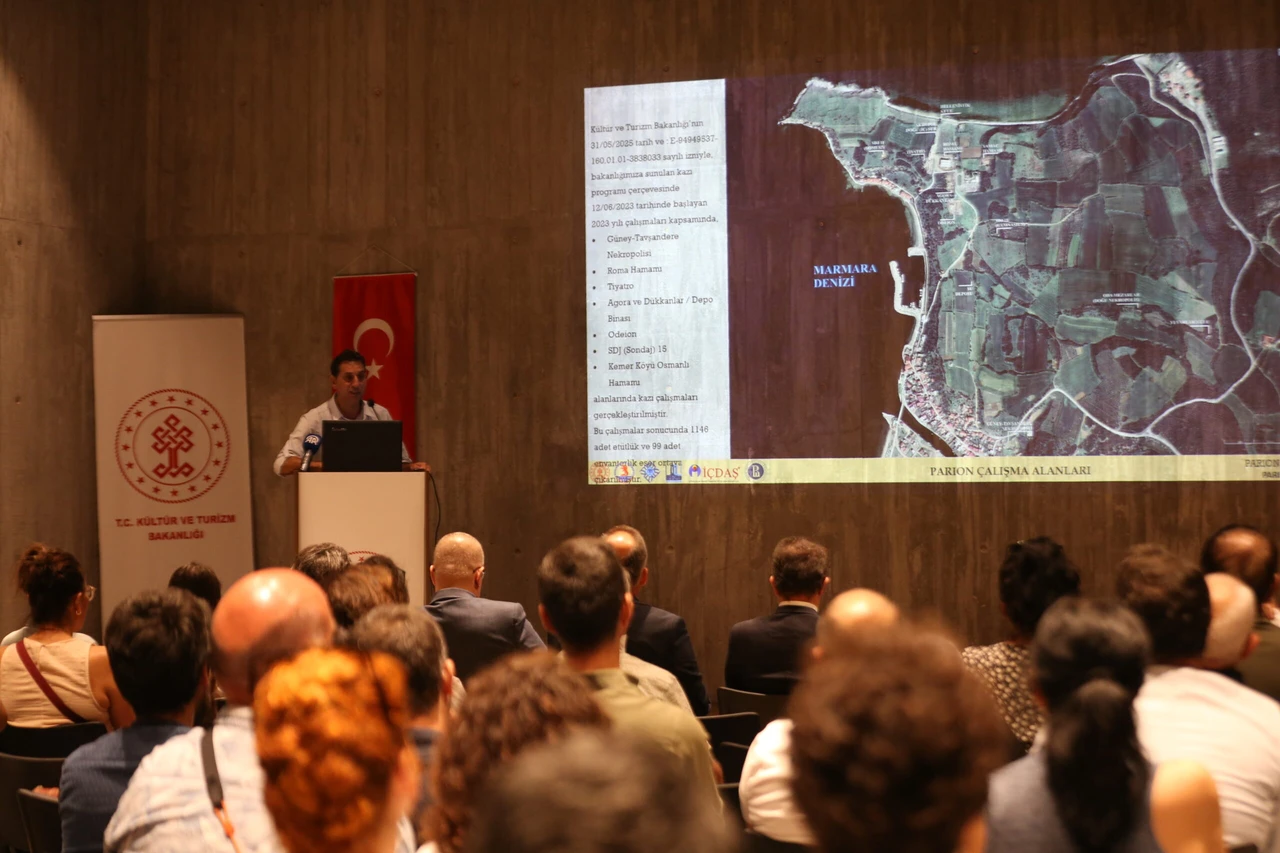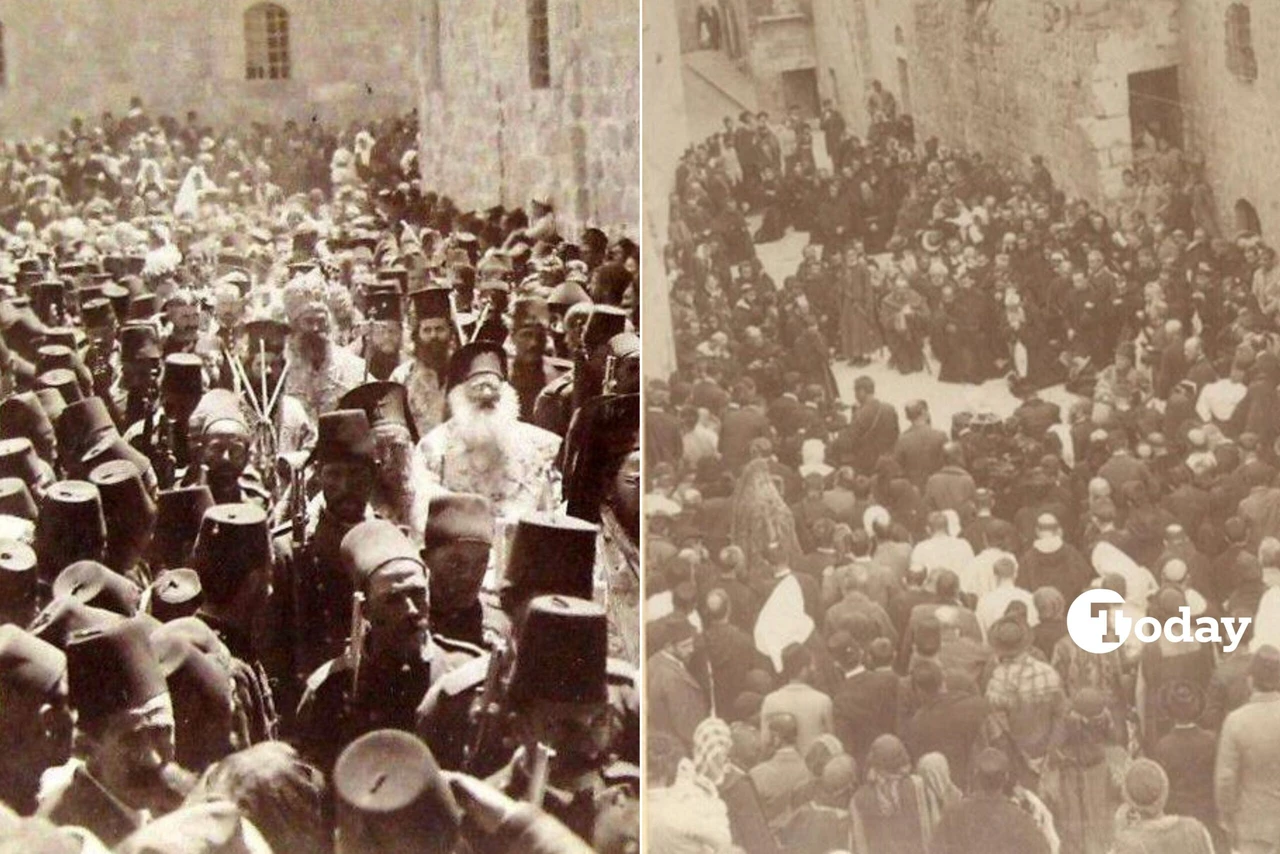Türkiye’s ancient necropolis unveiled at 3rd Troas Symposium
 Professor Vedat Keles, Head of Excavation of the Ancient City of Parion, explains the Ancient City of Parion, 3rd Troas Symposium, Canakkale, Türkiye, September 2, 2024 (AA Photo)
Professor Vedat Keles, Head of Excavation of the Ancient City of Parion, explains the Ancient City of Parion, 3rd Troas Symposium, Canakkale, Türkiye, September 2, 2024 (AA Photo)
The third Troas Symposium, part of the Canakkale Culture Route Festival, was held at the Troy Museum, shedding light on Türkiye’s archaeological treasures.
Professor Vedat Keles, the head of excavations at Parion, shared exciting new findings about the site. He revealed that Parion boasts one of the region’s most extensive and valuable necropolises, underscoring its significance as a historical and cultural center.
Recent excavations at Parion have unearthed 18 graves representing five distinct burial types: tile, wooden, simple earth, pottery, and urn coffins.
Parion: Lesser-known gem of Southern Marmara
During his presentation on the 2023 excavation at the ancient city of Parion, Keles highlighted the city’s significance as a coastal settlement in the Northern Troas region.
Despite its somewhat remote location, Parion has a rich history dating back to 709 B.C. and was continuously inhabited until the 12th century A.D.
The city, strategically located on the Anatolian side of the Dardanelles, played a crucial role due to its proximity to vital maritime routes and its two harbors – one in the south and a newly discovered northern harbor.

Riches of Parion’s necropolis
In 2023, excavations focused on various sectors, including the southern necropolis, Roman bath, agora, theater, and more.
The necropolis of Parion has proven to be a significant archaeological find, with 18 graves uncovered representing five distinct burial types. Among these were one cremation and 10 inhumation burials in tile graves, two inhumations in wooden coffins, three in simple earth graves, one inhumation in a pottery grave, and one cremation in an urn grave. These graves span from the Classical and Hellenistic periods to the first and second centuries A.D., providing a rich tapestry of the city’s history.
Transforming from Greek to a Roman City
Professor Keles also discussed Parion’s transformation from a Greek city to a Roman one, beginning during the reign of Caesar.
This shift marked the city’s transition from Greek culture to a Latin lifestyle, evidenced by the destruction of earlier periods by Roman urbanization.
Continued excavation and preservation efforts
The 2023 excavations also uncovered valuable artifacts, including 37 ceramics, 39 figurines, seven coins, five metal objects, five bone artifacts, and six glass objects, all of which were donated to the Troy Museum. The team also discovered a unique circular tomb, similar to those found in Thrace, and two additional urns.
The symposium featured presentations on other archaeological projects, including ongoing excavations at the Ancient City of Troy. Professor Rustem Aslan, head of the Troy excavation team, discussed future plans to open parts of the lower city to visitors, enhancing the site’s accessibility and historical significance.
The event brought together notable figures such as Canakkale Deputy Mayor Bulent Sarlan, Provincial Director of Culture and Tourism Cagman Esirgemez, Troy Museum Director Ridvan Golcuk, excavation leaders archaeologists and researchers.



